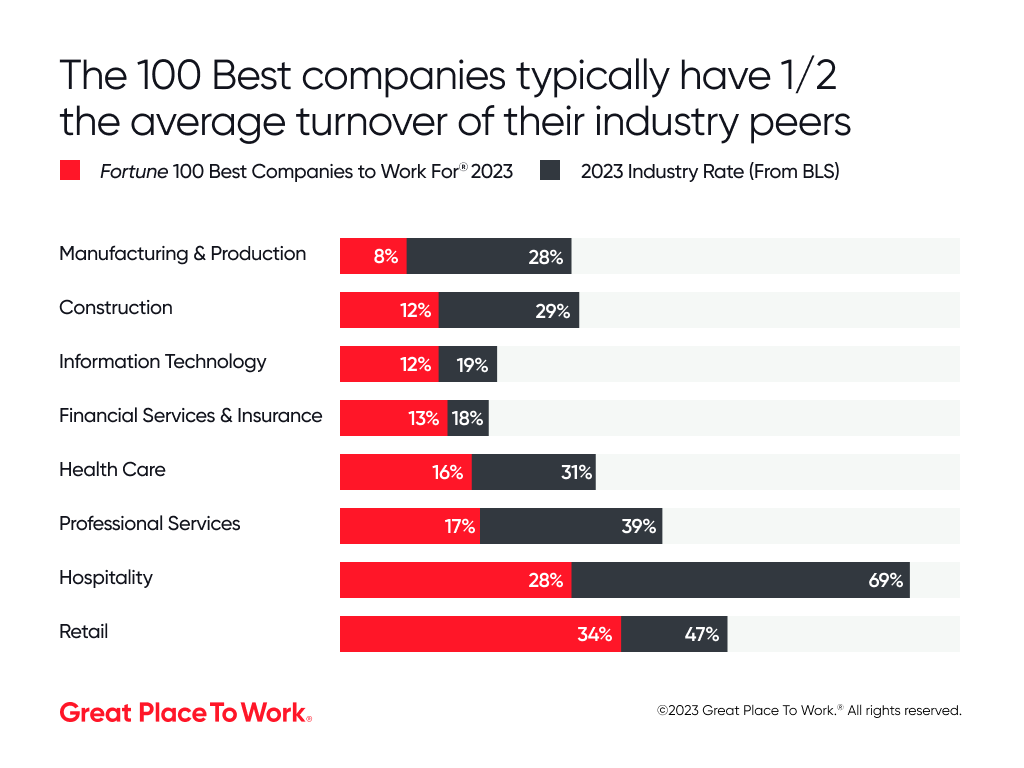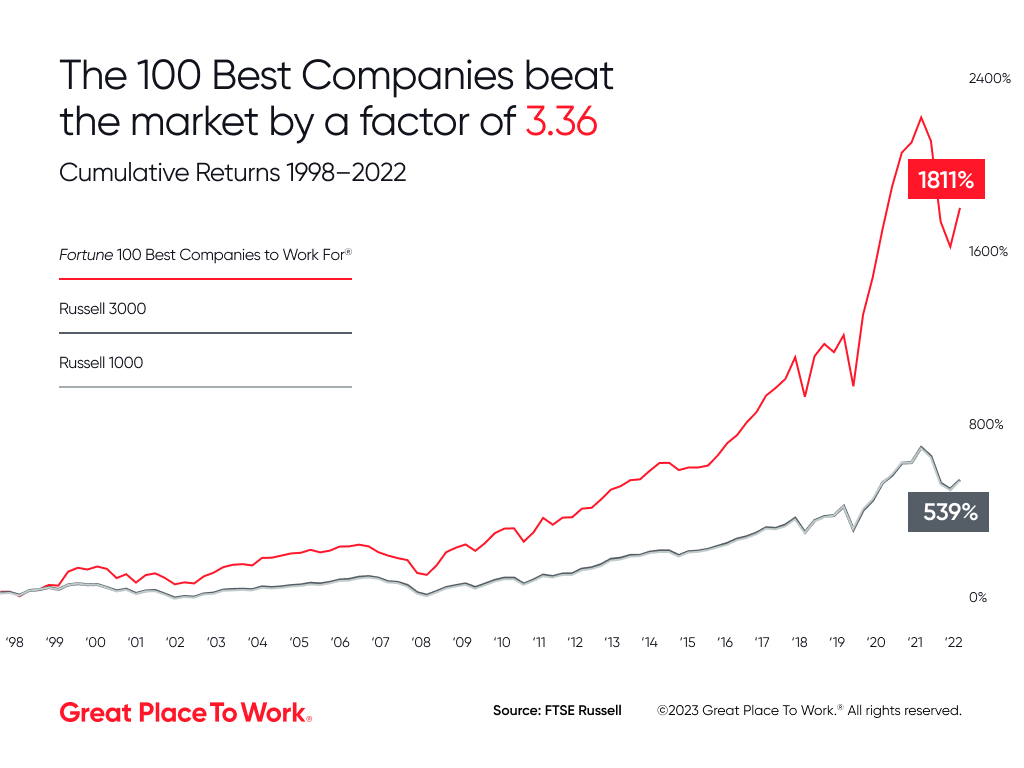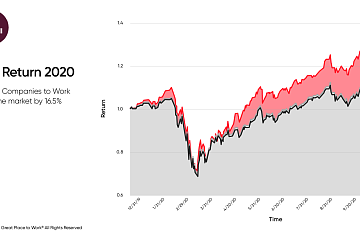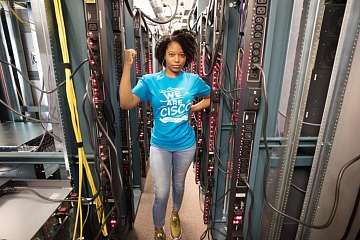Benchmarks & Trends, Benefits of Company Culture, Best Workplaces
Here’s what investors should consider about the employee experience.
Companies that make the Fortune 100 Best Companies to Work For® List consistently outperform the market by a factor of 3.36, according to FTSE Russell, the global index and data provider.
FTSE Russell looked at 25 years of market data and developed a hypothetical index using companies that make the annual 100 Best list compiled by Great Place To Work®. FTSE Russell analyzes the annual returns of the publicly traded companies on the list and compares those results to other market benchmarks.
The result? If you had invested in 100 Best Companies, you would more than triple what a similar investment might have earned in another portfolio.
While backwards looking data is no guarantee of future market success, the research offers a compelling case for considering the employee experience in an investment strategy.
“Measuring gives you insight,” says Catherine Yoshimoto, director of product management, FTSE Russell. “It gives you information you didn’t previously have.”
The value of culture
What are the metrics investors can use to understand if a company has thriving employees and a high-trust culture?
Companies that routinely make the 100 Best list have some common characteristics that offer helpful guideposts. Here are some of the metrics that set the best companies apart, according to Great Place To Work analysis:
1. Employee retention
Companies on the 100 Best have half the turnover of their industry peers.
Even when faced with layoffs, companies need to hold onto their best employees. When employees leave the company, they take their relationships, institutional knowledge, and future contributions with them. That’s why retention is an important indicator of future company performance.

2. Employees’ psychological and emotional health
At the 100 Best, 83% of employees report a healthy workplace, compared to just 52% at typical U.S. companies.
When you don’t have a healthy work environment, innovation and productivity suffers. Psychological safety, or how employees feel about taking risks in the workplace, is a key element of an innovation culture.
Investors might want to consider how a company is creating a culture where employees can generate new ideas, develop new skills, and push themselves to new levels of performance. When asked how they were investing in the health of their workers, companies from the 100 Best offered initiatives from several focus areas:
- Offer maximum flexibility
- Ensure employees use their PTO
- Invest in mental health resources
Less than half of U.S. workers take all of their available paid time off, per a recent Pew Research study. That indicates a potential competitive advantage for investors who identify companies that are giving their employees space to thrive outside of work.
3. Discretionary effort
Performance matters, and the great companies on the 100 Best list are no exception. Revenue-per-employee — a key metric that many investors scrutinize — doubled for companies on the 100 Best list.
But it also matters how you get that performance bump.
These companies have found ways to get more from their workers by investing in their growth and development — then reaping the rewards. Eighty-eight percent of employees at the 100 Best report giving extra effort at their job. Only 52% of workers say the same at a typical workplace.
When evaluating the health of a company, it’s crucial to get employees’ perspective.
Are workers really invested in the company’s mission and bringing their full set of unique gifts to bear on behalf of their organization? Or, are those productivity numbers just smoke and mirrors that mask a deeply unhealthy culture — where employees cut corners, fudge the numbers, and fail to report errors in fear of retaliation?
If you listen to employees, you’ll get a different data set on the health and performance of a company. Whether or not you use that data to guide your investment strategy? That will be up to you.
See how your company performs
Get started with Certification™ to see how your employees are contributing to the bottom line.
Note: Returns shown are hypothetical and for analysis purposes only. Past performance is no guarantee of future results. Charts and graphs are provided for illustrative purposes only. Index returns shown may not represent the results of the actual trading of investable assets. Certain returns shown may reflect back-tested performance. Back-tested performance is not actual performance, but is hypothetical.













